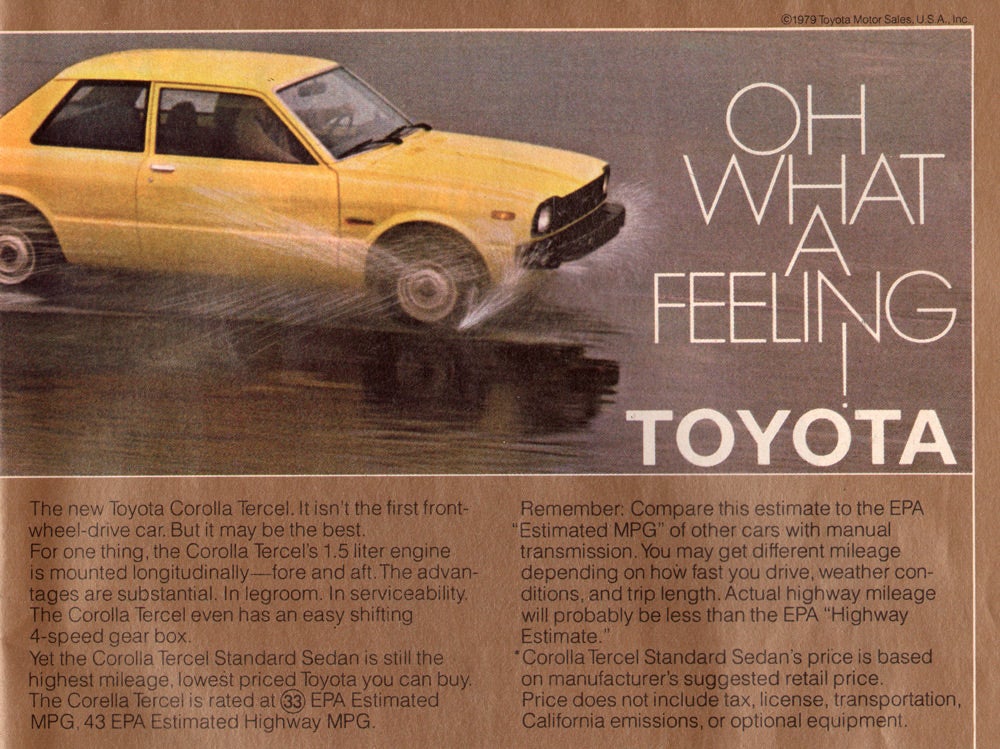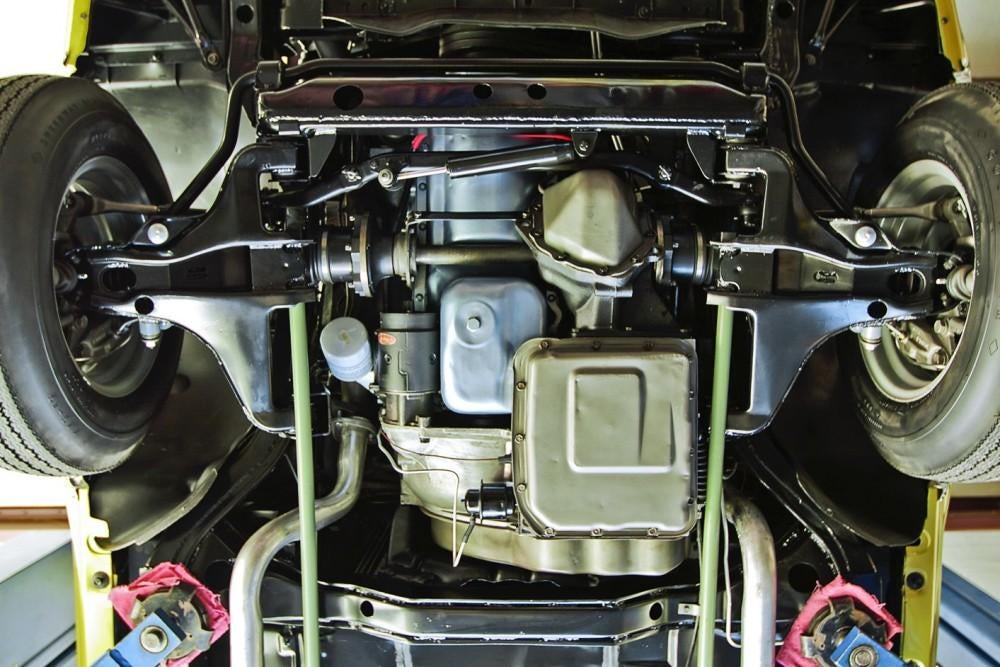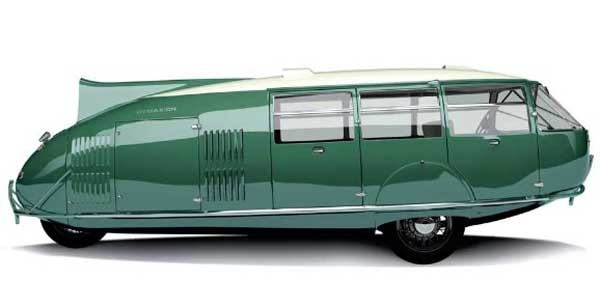 "Berang" (berang)
"Berang" (berang)
01/22/2016 at 15:47 • Filed to: None
 6
6
 15
15
 "Berang" (berang)
"Berang" (berang)
01/22/2016 at 15:47 • Filed to: None |  6 6
|  15 15 |

With a few exceptions (like the Subaru), the rule today is a transverse engine mounted inline with the transmission driving the wheels through unequal length drive shafts. But lots of other layouts have been tried. Let’s look at some of them.
!!! UNKNOWN CONTENT TYPE !!!
!!! UNKNOWN CONTENT TYPE !!!
I’ve covered some of the history of the conventional transverse layout in some other posts, so now I want to take a glance at some of the less conventional layouts that’ve been used.

The first successful configuration adopted by builders for mass production placed the final drive in front of the transmission, which was mounted in front of the longitudinally located engine. This made for a very long drive unit, with most of the weight well behind the front axle. Ruxton and Cord both used this layout on their breakout 1929 models. Those cars however did not succeed in the marketplace, BSA on the other hand sold cars with this layout for several years with modest success.

BSA was building a three wheeler to compete with the Morgan, and settled on front wheel drive as a way to gain an advantage over the one wheel drive morgan. Sending power to the front wheels was the only logical solution for getting two driven wheels on a three wheel car that needed two front wheels. They eventually added four wheel models and continued building front wheel drive cars until the mid 1930s. Production was not resumed after WWII, but the cars maintained a strong following that continues today.

DKW produced a transverse variation of this layout, starting with their seminal F1 model. The drive axles may look spindly, but they only had to transfer fifteen 2-stroke horses to the front wheels. DKW eventually moved the 2-cylinder engines ahead of the transmission, but ultimately ditched the transverse layouts in favor of longitudinal mounting.

The next leap forward occured when the gear box was moved to the front, and the final drive was positioned between it and the engine. This moved the engine and its weight closer to the drive wheels and freed up more of the wheelbase for passenger space. Although a number of different manufacturers in different countries adopted this layout, it became a signature of French automakers. The Citroën Traction Avant, and DS used this layout, as did a number of Renaults. Eight million Renault R4 cars were built with this layout, between 1961 and 1992. As odd as it looks today, this was the most common front wheel drive layout in the world for many years.

A possible misstep occurred when Panhard decided to try mounting the engine and transmission in front of the final drive. As their engine was only a tiny horizontally opposed twin there still wasn’t much resulting overhang, but the layout must have put a definite limit on just how much engine could fit up there. Panhard, by the way, invented the front engine, rear wheel drive layout in 1891, and they apparently felt that this was an improvement.

SAAB and Triumph decided to try something a little different. By the mid 1960s longitudinally mounted engines had pretty much become the norm for front wheel drive. The french were building millions of cars with the “backwards” layout, and SAAB, Subaru, and others were building cars with the engine mounted longitudinally, but ahead of the front axle. Now this was ok if the engine was very short like Subaru’s flat four, or SAAB’s (Ford built) V4, but it wasn’t a happy situation when a longer engine was needed.
The Mini mounted its inline four transversely, but it had its gears mounted in the engine sump which wouldn’t do for SAAB or Triumph. The Autobianchi Primula mounted its inline four transversely, and had its gearbox mounted inline with the engine - but it had unequal length drive axles, which were a new, unproven technology. Autobianchi had figured out how to mostly eliminate torque steer when using unequal length drive axles, but just how much power was their design good for?
Better not risk it. Longitudinal engines and equal length axles were in, but front overhang had to go. The solution was to balance the engine on top of the transmission. The clutch went at the front of the engine and sent power down into the gearbox underneath the engine. To keep the hoodline low, the engine was canted over. Although Triumph gave up on front wheel drive, SAAB successfully used this layout for decades.

Toyota had been experimenting with front wheel drive since the 1950s, but they didn’t put a front driver into production until 1978. And when they did they wanted it to be as much like a rear wheel drive car as possible. This meant it had to have a longitudinally mounted engine, a transmission mounted proper - inline - behind the engine, and no discernible torque steer.

Toyota’s solution was to build a “two-story” transmission. The engine and clutch were on the second floor, and the gearbox and differential were on the first. With the engine perched over the final drive, front overhang was minimized, but the transmission could be conventionally placed, and the gear change was as precise as anything in any of Toyota’s rear drive cars. The result was a front driver that felt like a conventional rear driven Corolla (except that it actually handled better).
Which brings us to one of the most interesting takes on front wheel drive ever. Surprisingly, it’s not French. It’s American.

What happens if you want to build a front wheel drive car, but you want it to use a big V8? And you need to send a few hundred pound feet of torque to the front wheels, but you don’t want torque steer? Well, that’s what the engineers at Oldsmobile needed to figure out when they designed the Toronado.
Oldsmobile was facing the same sort of problem SAAB and Triumph would face a bit later. Only an order of a magnitude larger. They needed to fit a big engine, transmission, and final drive into the front of a car, and it needed to fit into a normally sized engine bay. The engine was only going to fit in the conventional way, so they went with that. The torque converter was fitted inline with the engine in the usual manner. But the gearbox was mounted beside the torque converter instead of behind it, and the two were connected by a giant chain.

The differential connected to the front of the gear box - and to avoid the use of unequal length drive axles, a short jackshaft extended from the passenger side of the differential, routed under the oil pan of the engine, and connected to the passenger side drive axle. A vibration damper was fitted to the driver side axle, and exceptionally massive control arms were used on the front suspension, but to the surprise of most everyone - the Toronado managed the big V8's 385 horsepower with grace.
As it turns out, there are a lot of different ways to get the power to the front wheels, although ultimately the Primula’s combination of transverse engine and unequal length drive shafts won out. That layout is cheap to build and it’s compact. However, a few of these other layouts still have advantages so far as handling and the handling of power are concerned. As engine outputs continue to rise along with the average car’s weight, the deficiencies of the transverse layout may potentially lead automakers to look back at some of these other configurations. Maybe.
 Master Cylinder
> Berang
Master Cylinder
> Berang
01/22/2016 at 15:57 |
|
How about the Dymaxion Car? A rear-engine, front-drive layout isn’t something you come across every day.

http://bfi.org/about-fuller/big-ideas/dymaxion-world/dymaxion-car
 Berang
> Master Cylinder
Berang
> Master Cylinder
01/22/2016 at 15:58 |
|
Yes but it never went into real production.
 Master Cylinder
> Berang
Master Cylinder
> Berang
01/22/2016 at 16:04 |
|
Sad but true. ;_;
 Cé hé sin
> Master Cylinder
Cé hé sin
> Master Cylinder
01/22/2016 at 16:22 |
|
There’s very likely a reason for that...
 CommonSenseIsn'tCommon
> Berang
CommonSenseIsn'tCommon
> Berang
01/22/2016 at 16:31 |
|
Didn’t the original Taurus center-mount the transmission and use equal-length half-shafts to avoid torque steer?
 Berang
> CommonSenseIsn'tCommon
Berang
> CommonSenseIsn'tCommon
01/22/2016 at 16:37 |
|
Sort of. It was like the transverse version of the Toronado layout.
 Cé hé sin
> Berang
Cé hé sin
> Berang
01/22/2016 at 16:38 |
|
You want odd fwd layouts?
Meet the Tempo Hanseat. The engine and gearbox sat above the single front wheel and drove it via a chain. Turn the wheel and the whole lot - engine, transmission and wheel - turned.


 Berang
> Cé hé sin
Berang
> Cé hé sin
01/22/2016 at 16:42 |
|

Yes, but not quite so wacky as the Bond minicar’s take.
 Cé hé sin
> Berang
Cé hé sin
> Berang
01/22/2016 at 16:46 |
|
Or indeed the Cugnot Steam Tractor.

 If only EssExTee could be so grossly incandescent
> Berang
If only EssExTee could be so grossly incandescent
> Berang
01/22/2016 at 17:30 |
|

Chrysler used a fun layout on the Intrepid/Concorde/LHS/300M. The V6 was longitudinal, and the transmission had a chain at the end transferring power to an intermediate shaft that went back up to a final drive located right behind the bellhousing.


 Berang
> If only EssExTee could be so grossly incandescent
Berang
> If only EssExTee could be so grossly incandescent
01/22/2016 at 17:42 |
|
Neat, and one I was not aware of. I guess this allows for a lower engine mounting than possible with the Toronado style setup. But also so much weight in front of the axle.
 Textured Soy Protein
> Berang
Textured Soy Protein
> Berang
01/22/2016 at 17:55 |
|
Honda used the longitudinal FWD layout in several 90s Acuras including the 2nd gen Legend, 1st gen RL, Vigor, and 1st gen TL.
Any VW/Audi bigger than the Golf/Jetta/A3 is the same way. A4, Passat on up, all the FWD versions have longitudinal engines with the transmission behind them.
 Berang
> Textured Soy Protein
Berang
> Textured Soy Protein
01/22/2016 at 18:06 |
|
The Audi drive train is similar to the Subaru, early SAAB, DKW, etc. It’s relatively common, so I did not list it here.
The Accura transaxle is pretty unique, but it’s like a more refined version of the Tercel transmission, with the final drive pushed further forward under the engine.
 Jonee
> Berang
Jonee
> Berang
01/22/2016 at 22:08 |
|
A few microcars had that setup like this Spanish David.

The French New Map Solyto van as well.
 Jonee
> Berang
Jonee
> Berang
01/22/2016 at 22:10 |
|
I think my NX, and the Sentra it’s based on, is transverse with equal half shafts, but I can’t remember how they achieved that. Or, if I’m thinking of a different car.